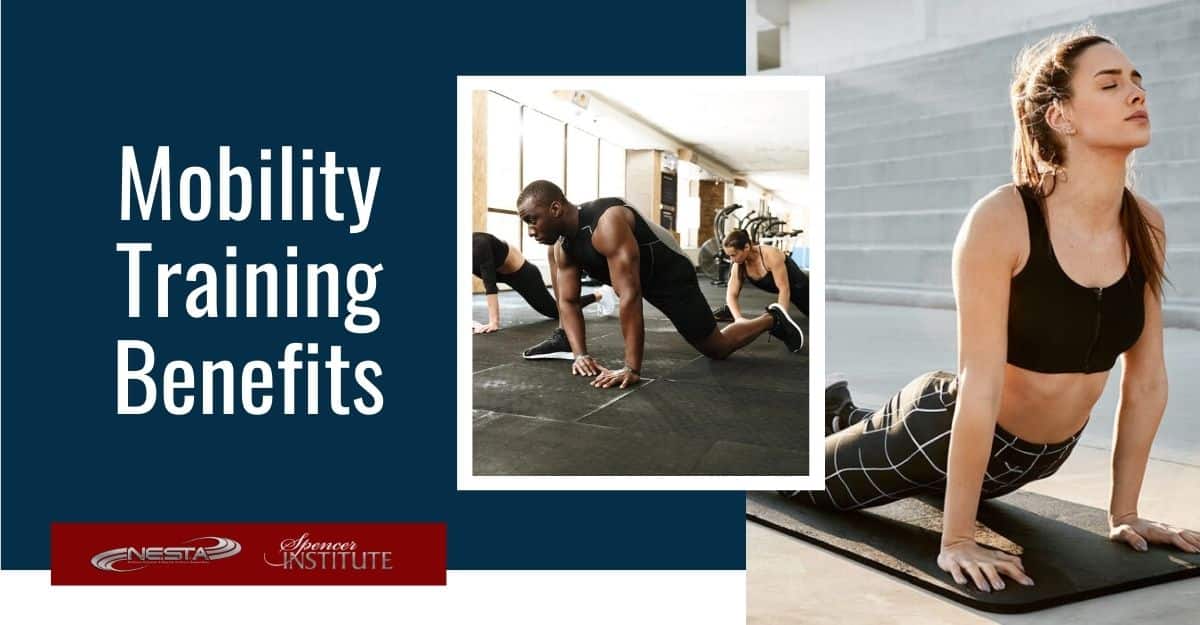What Do You Need to Know About Mobility?
Mobility training has taken social media by storm: The hashtag #mobilityTikTok has already racked up over 35 million views and shows folks promoting stretchy routines as a way to feel more flexible and mobile.
While you may confuse mobility with flexibility or stretching, there’s more to it than that. Although they are related, the difference between mobility and flexibility matters because it affects athleticism and injury risk. As mobility includes moving through a full range of motion, you need flexibility in those muscles to be mobile.
Flexibility and stretching involve lengthening your muscles, while mobility takes it one step further. Mobility training optimizes movement and performance by increasing the range of motion within your joints and surrounding muscles. When you’re more mobile, you can train harder, recover faster, and perform better.
Mobility is yet one more attribute of fitness. Along with other fitness attributes, (including flexibility, strength, power, and aerobic fitness), it is both evaluated and assessed by the trainer in the earliest stages of interaction. It is important for us to get this correct. Typically this is accomplished by performing movement screens and noting observations.
Why Having Good Mobility is Important
The benefits of mobility training:
- Promotes good posture
- Helps prevent knots and injuries.
- Relieves tension associated with sedentary lifestyles or over-exercising.
- Improves functional fitness performance.
- Increases range of movement, helping us stay active and healthy longer in life.
- Reduces joint deterioration
- Prevents aches and pains
- Helps build stronger, more adaptive muscles and joints.
How Regular Exercise Improves Mobility
Exercising on a regular basis has immense benefits, including improving joint mobility and your sense of well-being. Examples of mobility training exercises include foam rolling, mobility drills, and stretching.
Studies have shown that interventions aiming to increase muscle strength will improve mobility. Physical activity, particularly walking, plays a key role in the maintenance of mobility, especially among the older population.
Stretching has also been used in many physical activities to increase the range of motion around a joint. Controlled dynamic stretching will increase joint range of motion and enhance muscle power better than both static stretching and ballistic stretching (stretch and bounce), according to a study published in Sports Medicine.
At-home Mobility Exercises
NESTA Senior Vice President, Scott Gaines, recommends the following movements for those wanting to get started with some mobility training. These can be easily incorporated into your stretching/warm-up routines either at home or in the gym:
Cat-cow: The cat-cow stretch is a fantastic way to mobilize the spine, particularly the thoracic region. Start on your hands and knees, with your hands under your shoulders, and knees under your hips. Allow your stomach to slowly drop down and hold this position. Next, arch your back up by tucking your head and tailbone in, and pulling your belly button in towards your spine. Hold this position and repeat.
Downward dog: Downward dog stretches and widens the hamstrings, the calves, and the Achilles tendon. In downward dog, your head is lower than your heart, so it has the benefits of inversions and improves the blood flow through your body. Downward dog stretches and helps to relieve tension from the neck and back.
World’s greatest stretch: The world’s greatest stretch incorporates thoracic mobility through the twist that’s performed during the lunge, and it also loosens up the muscles of the lower legs through the hamstring stretch performed at the end
Lunge with rotations: Lunge twists engage multiple muscle groups. As a lower body workout, it helps strengthen your hamstrings, glutes, and hip flexors. Parivrtta anjaneyasana is a low lunge yoga pose similar to the lunge twist.
Standing one-legged hamstring stretch: Hamstring stretches are easy to perform and can be done at home, in office, or at the gym or park. Keeping the hamstrings elongated and flexible can help stabilize and support the spine, preventing sciatic nerve root irritation and lower back pain.
What’s Next
Check out what it takes to start a career in personal fitness training. NESTA is your most affordable and fastest way to become a highly qualified personal trainer.
There is always something exciting about earning a new training or coaching certification and applying that new knowledge of how you train your clients. This also helps you hit the reset button.
Learn how to become a Sport Yoga Instructor. This program is a comprehensive online yoga teacher training program for fitness professionals who want to integrate yoga movements into their one-on-one training-group fitness or group exercise programs.
Learn how you can quickly and easily add yoga to your fitness business and expand your career now.
Check out what it takes to start a career in personal fitness training. This is your most affordable and fastest way to become a highly qualified personal trainer.
NESTA coaching programs are open to anyone with a desire to learn and help others. There are no prerequisites.
That’s it for now.
Take action!
PS: Click here to see many helpful business/career resources








